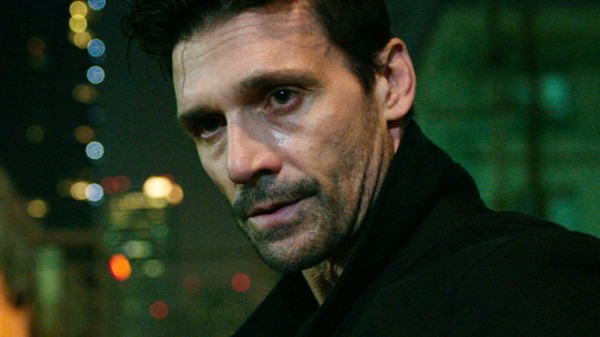The Purge – 2013’s horror/thriller about a near-future America, where on one night a year, for twelve hours, virtually all crime is legal – was a frustrating experience.
It boasted an intriguing premise, but failed to build upon it, instead focussing in on one (uninteresting) family in a fairly generic house-under-siege plot, and featuring an over-abundance of people walking aimlessly around dark corridors. It wasn’t terrible, but it felt like a missed opportunity. It was too often the worst thing a film can be: it was boring.
A year later, and James DeMonaco returns to direct a sequel, and it’s one that paints on a much bigger canvas, and is all the better for it.
The plot takes us out into the streets of Los Angeles to witness the chaos of the Purge first hand, as we follow a group of innocents – primarily a likable mother/daughter duo, and a young couple on the rocks – who happen to find themselves stranded in the streets when the laws are suspended. Luckily for them, the run into Frank Grillo’s steely Barnes, a man curiously and perhaps worryingly prepared for the night ahead, but who reluctantly agrees to take them into his protection for the duration.
The Purge: Anarchy, as the name suggests, features its fair share of action. Not only is there more of it, but it’s of a higher quality. DeMonaco shoots with more excitement and tension than his first film ever managed, and the threats come from sources both internal and external to our group, as a night without laws brings out sides of people that our protagonists may not have expected.
Whilst primarily an action-thriller, The Purge: Anarchy – much like its predecessor – does make attempts at having an actual point. The notion that the Purge amounts to an annual war between the 1% and the 99% is laid on pretty thick throughout: a banker strung up outside his place of work is about as subtle as a brick to the face.
In another sequence, a group of caricatured rich folk stage an auction, whereby the lots they bid on are people whom they then get to murder, rather than antique vases and old wardrobes. The film’s allusions to class warfare and the exploitation of the poor are as ham-fisted as they could be, but at least they’re trying.
While the cartoonish rich are painted as the principal enemies on this fateful night, they’re difficult to take seriously – they’re almost played for laughs – but the film does boast a far scarier group of antagonists in a genuinely intimidating street-gang who are pursuing our heroes.
Unfortunately, this is one aspect in which film doesn’t play to its strengths, because despite their foreboding presence and extensive establishing shots, the gang don’t actually get to do very much. The screenplay paints them wonderfully, but then seems to lose interest in them, which is a shame, as they’re a more visceral, threatening prospect than the rich folk.
And it’s that element of frustration which seems to be a constant in The Purge franchise. While this sequel is superior to the first instalment in nearly every way, there’s still work to be done. The notion of a Purge is such an interesting on that it would perhaps be nice to see a third film expand the canvas even further.
What do the Government officials do on this night? Indeed, who are the New Founding Fathers; the people who instigated this sanctioned pogrom? What does the rest of the world think of America’s new system of social justice?
Frustrations aside, The Purge: Anarchy is a gritty, sweaty thriller that delivers plenty of thrills, spills and kills. The principal cast are all solid, and Frank Grillo makes for an effectively grizzled hero.
The Purge: Anarchy is the sort of film that’s going to appeal to a certain audience, and that audience will undoubtedly leave satisfied. This is far closer to the film that the premise deserved the first time around, and if the upward swing in quality continues, The Purge 3 could be something to really look forward to.
Released in UK cinemas on Friday 25 July 2014.

